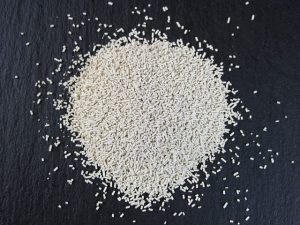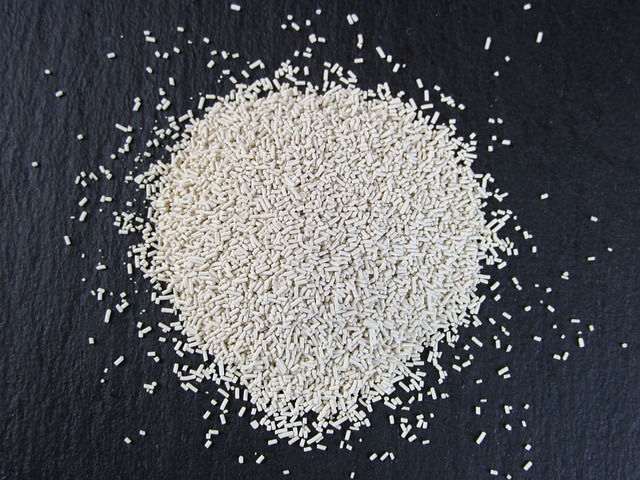Yeast infections are a common type of fungal infection that affects millions of women worldwide. They occur when there is an overgrowth of Candida fungus in the body, which can lead to a range of uncomfortable symptoms. There are several different types of yeast infections, including vaginal yeast infections, oral thrush, and skin infections. While yeast infections are not usually serious, they can be uncomfortable and may require treatment.
Women are more likely to develop yeast infections than men, and certain factors can increase the risk of developing an infection. These include taking antibiotics, having a weakened immune system, and using certain types of birth control. In this article, we will explore the causes, symptoms, and treatments for yeast infections, as well as tips for preventing them from occurring.
Causes of Yeast Infections
 Yeast infections are caused by an overgrowth of Candida fungus in the body. This fungus is naturally present in the body and is usually kept in check by other bacteria and microorganisms. However, certain factors can disrupt the balance of bacteria in the body and allow Candida to grow unchecked.
Yeast infections are caused by an overgrowth of Candida fungus in the body. This fungus is naturally present in the body and is usually kept in check by other bacteria and microorganisms. However, certain factors can disrupt the balance of bacteria in the body and allow Candida to grow unchecked.
Factors that contribute to Candida overgrowth include taking antibiotics, which can kill off beneficial bacteria in the body; having a weakened immune system due to illness or medication; and using certain types of birth control that contain estrogen. Medical conditions such as diabetes and HIV can also increase the risk of developing yeast infections.
Symptoms of Yeast Infections
The symptoms of yeast infections can vary depending on the type of infection and where it occurs in the body. Vaginal yeast infections are one of the most common types and can cause symptoms such as itching, burning, and soreness around the vagina; pain during sex or urination; and a thick white discharge that may resemble cottage cheese.
Oral thrush can cause white patches on the tongue or inside the mouth, as well as soreness and difficulty swallowing. Skin infections can cause red, itchy patches on the skin that may be accompanied by a rash or blisters.
It is important to differentiate yeast infections from other types of vaginal infections, such as bacterial vaginosis or sexually transmitted infections. If you are experiencing symptoms of a vaginal infection, it is important to see a doctor for an accurate diagnosis and appropriate treatment.
Natural Remedies for Yeast Infections
There are several natural remedies that may help to alleviate the symptoms of yeast infections. Probiotics, which contain beneficial bacteria that can help to restore the balance of bacteria in the body, may be helpful in preventing and treating yeast infections. Tea tree oil, which has antifungal properties, can be applied topically to the affected area to help reduce itching and inflammation.
Garlic is another natural remedy that may be effective against yeast infections. It contains a compound called allicin, which has antifungal properties and may help to reduce the growth of Candida fungus. Yogurt, which contains beneficial bacteria known as lactobacillus, can also be helpful in preventing and treating yeast infections.
Coconut oil and apple cider vinegar are two other natural remedies that may be effective against yeast infections. Coconut oil has antifungal properties and can be applied topically to the affected area to help reduce itching and inflammation. Apple cider vinegar can be diluted with water and used as a vaginal wash to help restore the pH balance of the vagina.
Over-the-Counter Treatments for Yeast Infections
If natural remedies do not provide relief from yeast infection symptoms, over-the-counter treatments may be necessary. Antifungal creams and suppositories are available without a prescription and can be used to treat vaginal yeast infections. Oral medications may also be prescribed by a doctor for more severe or recurrent infections.
When choosing an over-the-counter treatment for yeast infections, it is important to read the label carefully and follow the instructions for use. Some treatments may be more effective than others depending on the type and severity of the infection.
Prevention of Yeast Infections
There are several lifestyle changes that can help to prevent yeast infections from occurring. These include wearing loose-fitting clothing made from breathable fabrics, avoiding douching or using scented products in the vaginal area, and practicing good hygiene.
Maintaining vaginal health is also important in preventing yeast infections. This includes avoiding sexual practices that can disrupt the balance of bacteria in the vagina, such as unprotected sex or frequent sex with multiple partners. It is also important to avoid using certain types of birth control that can increase the risk of yeast infections.
If you are prone to recurrent yeast infections, there are several steps you can take to reduce your risk. These include taking probiotics regularly, avoiding sugar and refined carbohydrates, and maintaining a healthy weight.
Yeast infections are a common type of fungal infection that can cause discomfort and inconvenience. While they are usually not serious, it is important to seek medical advice if symptoms persist or if you are experiencing recurrent infections. Natural remedies such as probiotics, tea tree oil, and garlic may be helpful in treating yeast infections, while over-the-counter treatments such as antifungal creams and suppositories may be necessary for more severe infections.
Preventing yeast infections involves maintaining good hygiene and vaginal health, as well as making lifestyle changes such as wearing loose-fitting clothing and avoiding certain types of birth control. By taking these steps, you can reduce your risk of developing yeast infections and enjoy better overall health and wellbeing.








